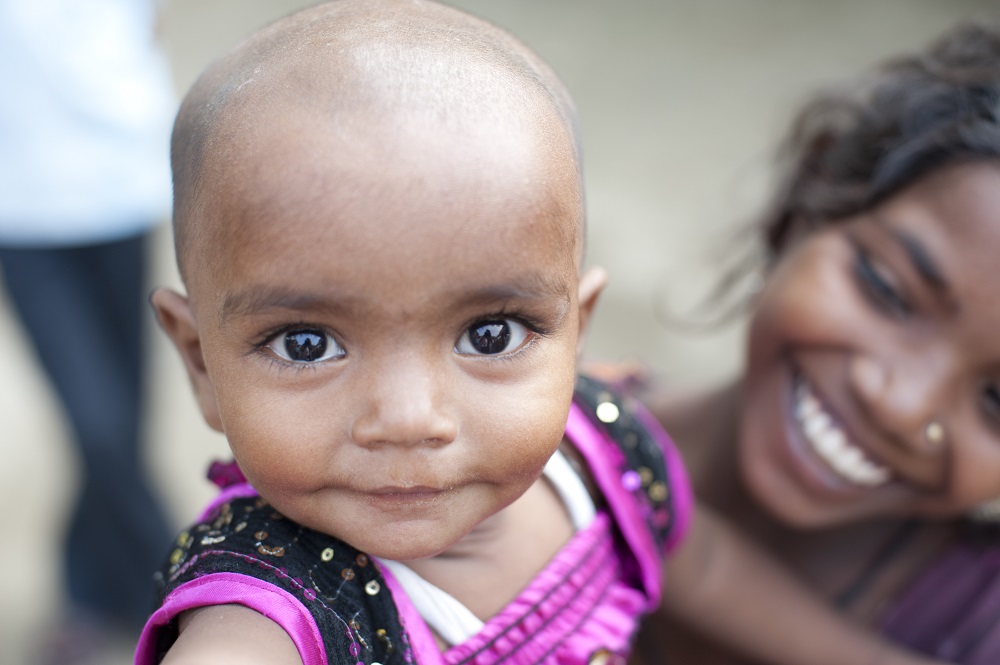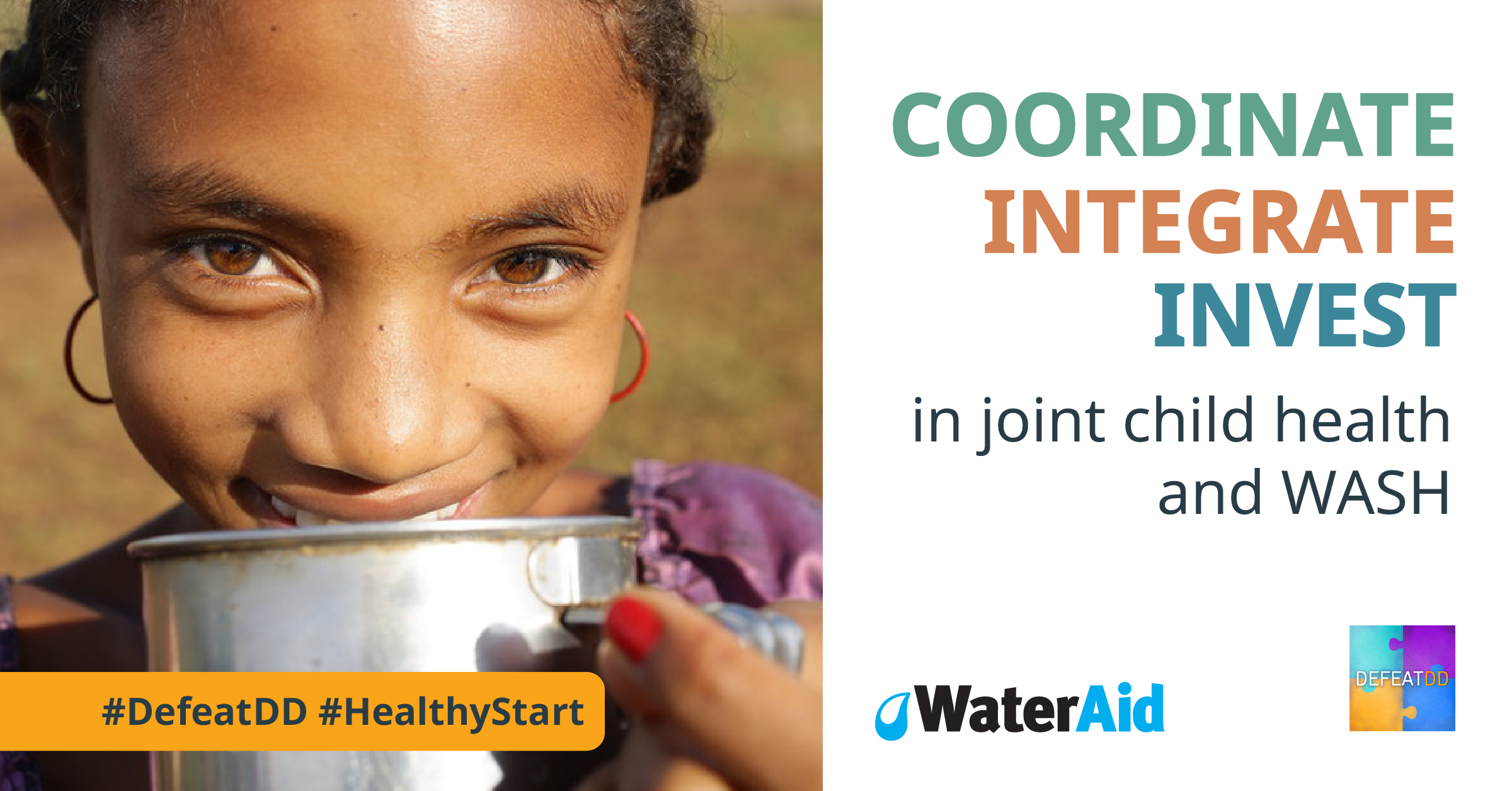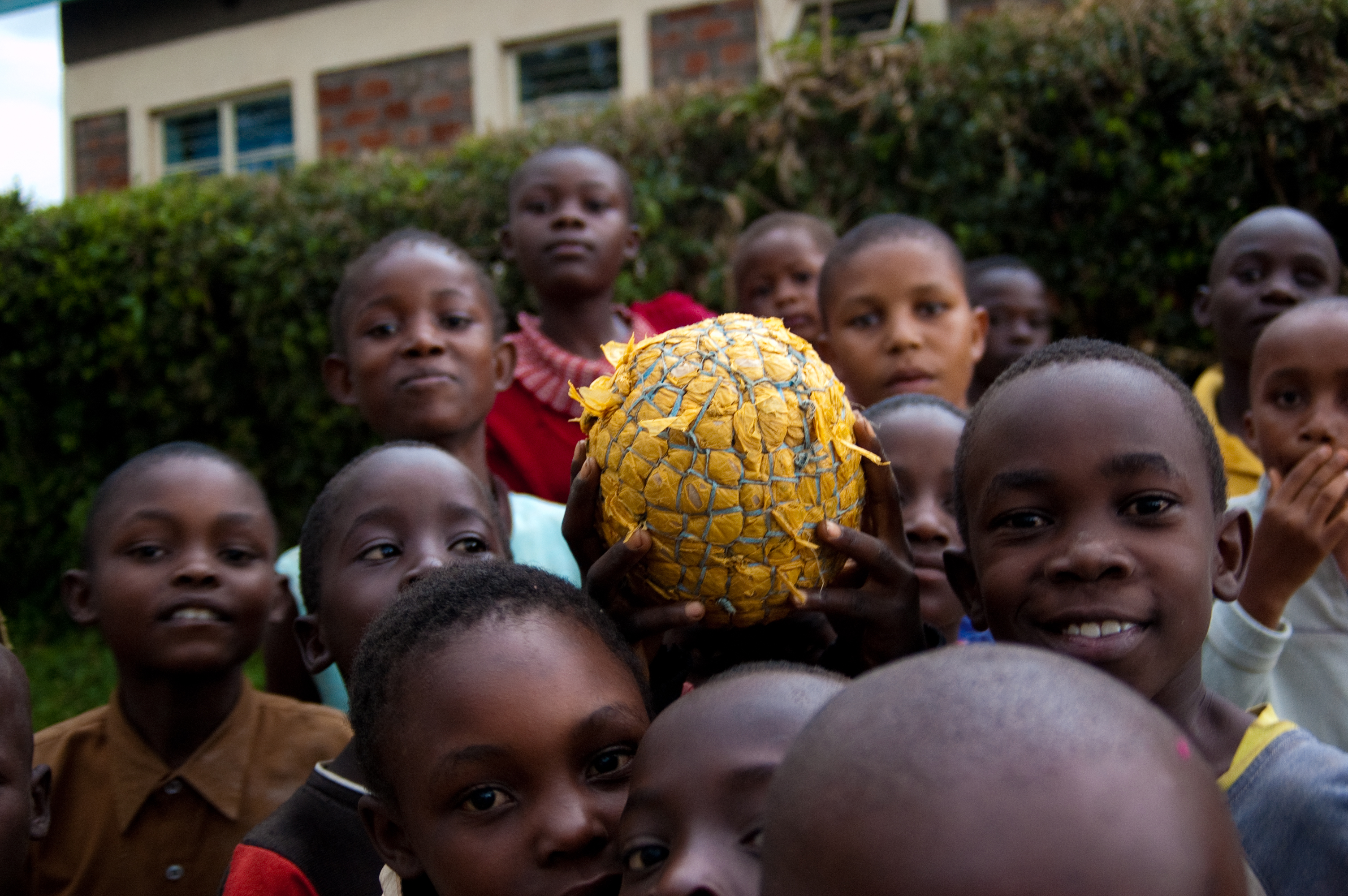The 2018 story of diarrheal disease
|
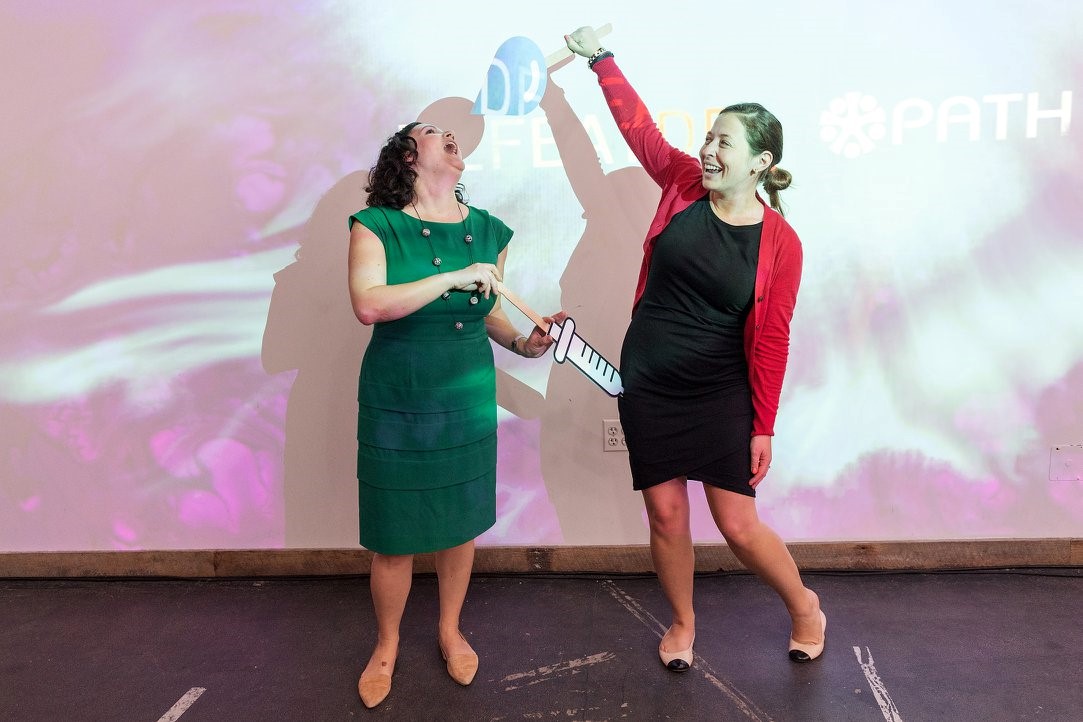
Colleagues at our Take the Plunge event demonstrate WASH and vaccine integration… we think.
Personally and professionally, December is my favorite time of year to be reflective, and this year that feels especially the case. I’m not sure if that’s because the DefeatDD Initiative (and my tenure on this great team) turns 10 years old next year (!!), or because it felt like a particularly intense news year, or a combination of both.
In the world of child health, and diarrheal disease in particular, I’m reminded that the remaining challenges that face the community have shape-shifted partially as a result of the successes we’ve achieved together. Sometimes the most intractable problems can give the impression that we’re not making headway, when the opposite is the case. It also illuminates why throwing in the towel at this juncture would be tragic indeed. What we are doing is working, which is precisely why we can’t stop now.
The 2018 story of diarrheal disease is that fewer children are dying than ever before, but episodes of illness remain high. That means surviving children are at risk of physical and cognitive growth shortfalls that can have a long-term impact on their quality of life. This includes children in refugee and displaced populations who are at high-risk of ill health lack access to high-quality medical care. Given this reality and the work that remains to reach the most vulnerable children, I don’t think any of us can find satisfaction in simply checking the survival box.
The conversation is rightly turning toward equitable coverage. For ongoing efforts to diarrheal disease, that means ensuring that children not only survive, but are protected from the infections that threaten their ability to reach their full potential. It also means reaching the hardest to reach. Statistics that are averaged on a national scale can mask significant subnational variation (see this example for diarrhea pathogens ETEC and Shigella), and investing in high-quality geospatial data can yield targeted insights for applying resources where they’re most needed.
In the spirit of equity for children around the world, here are a few themes that we’ve followed over the year. Expect to hear more from us on these themes in the year ahead:
A new effort to increase ORS/zinc access
Global use of oral rehydration solution (ORS), the highly effective cornerstone treatment for dangerous dehydration caused by diarrhea, is already low – and add the combined use of zinc, per the World Health Organization recommendation, and the rate is a dismal 7%.
That’s why PATH and partners submitted a request to the World Health Organization to recommend co-packaged ORS and zinc be included on all national essential medicine lists (EMLs). It would be a move with several cascading health and cost-saving benefits that will ultimately help ensure equitable access to these basic diarrhea treatment tools. Here, PATH’s Kenya office director, Anthony Okoth, explains how Kenya’s inclusion of the ORS/zinc co-pack in its national EML has made an impact, and keep an eye out for more awareness-raising materials in support of this effort early next year.
New rotavirus vaccine options
Rotavirus remains one of the most lethal diarrhea pathogens, and since this virus thrives even in settings with access to clean water and sanitation, vaccines remain the best form of protection. In 2018, two additional low-cost rotavirus vaccines became available for high-burden countries: ROTAVAC and ROTASIIL, the latter of which is the first thermostable rotavirus vaccine—meaning that it does not require refrigeration. This is hugely beneficial because it means fewer vaccines spoiling due to erratic power supply in rural areas, overcoming a common obstacle to equitable access.
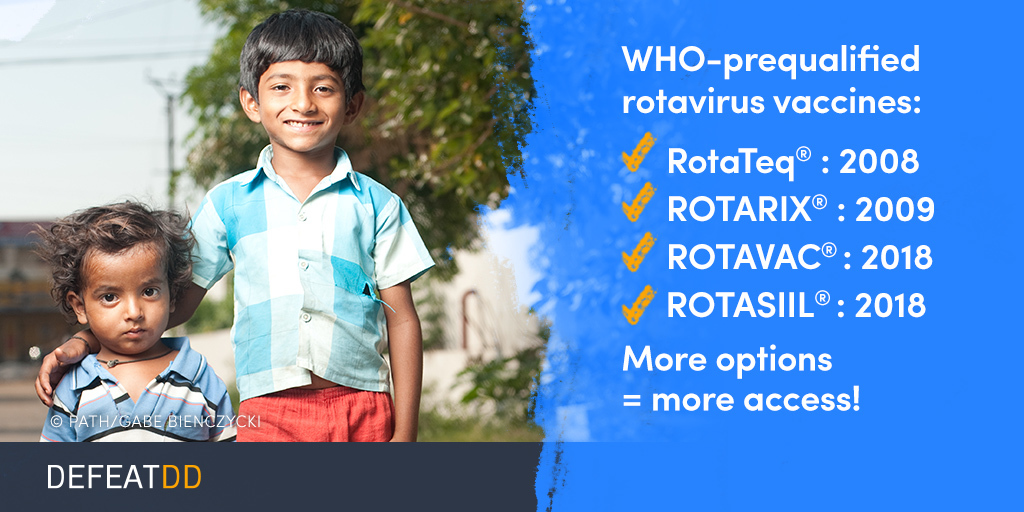
Study after study demonstrate the lifesaving impact of the rotavirus vaccines in the African countries where they’ve been introduced. A gap remains in Southeast Asian countries that have yet to introduce the vaccine. We hope the additional India-made additions to the rotavirus vaccine toolkit will spur investments in this region in the year ahead.
Combining immunization and WASH (water, sanitation, and hygiene) promotion
Cholera outbreaks in Zambia, conflict-ridden Yemen, and the Rohingya refugee camps in Bangladesh dominated health emergency headlines this year. Emergency response and long-term health investments can result in two different program applications, but given the unprecedented availability of new vaccines against cholera, rotavirus, and typhoid, we’re compelled by the opportunities to seize upon a key integration opportunity in both acute and chronic high-risk situations: WASH and vaccines.
Earlier this year, we teamed up with WaterAid to produce a report with practical case studies of integration for country policymakers, including a successful pilot from Nepal that incorporated WASH instruction during routine immunization appointments. It was so successful that the country plans to deploy the program nationwide (read an interview about the program or watch the video). We’ll be on the lookout for more examples of WASH and immunization program integration. If you know of one, please share it with us!
Not only would it be unsatisfactory to check off the box and consider the diarrhea crisis solved, but with all this momentum underway, I feel optimistic that we’ll keep charging forward and showing up for the world’s children. Here’s to another year of creating better futures for children, communities, and nations.









